Activity and Variety of Soil Microorganisms Depending on the Diversity of the Soil Tillage System, Furtak K., Gajda A.M., w: Sustainability of Agroecosystems, Alexandre Bosco de Oliveira, IntechOpen, 2018
Rozdział w monografii
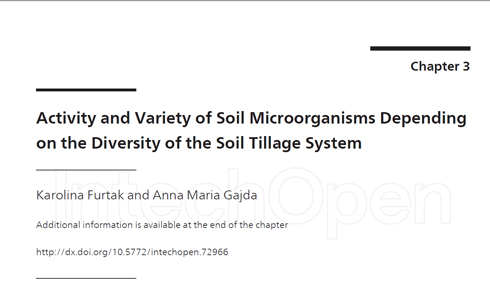
Zakład Mikrobiologii IUNG-PIB Puławy

Activity and Variety of Soil Microorganisms Depending on the Diversity of the Soil Tillage System, Furtak K., Gajda A.M., w: Sustainability of Agroecosystems, Alexandre Bosco de Oliveira, IntechOpen, 2018
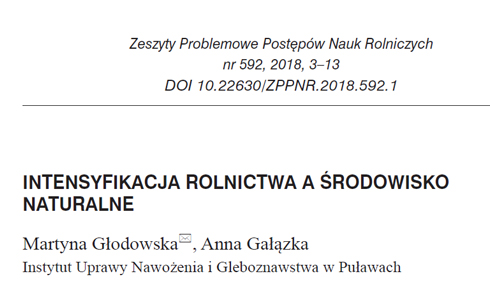
Intensyfikacja rolnictwa a środowisko naturalne. Głodowska M., Gałązka A., Zeszyty Problemowe Postępów Nauk Rolniczych, 592, 2018, 3-13, DOI 10.22630/ZPPNR.2018.592.1
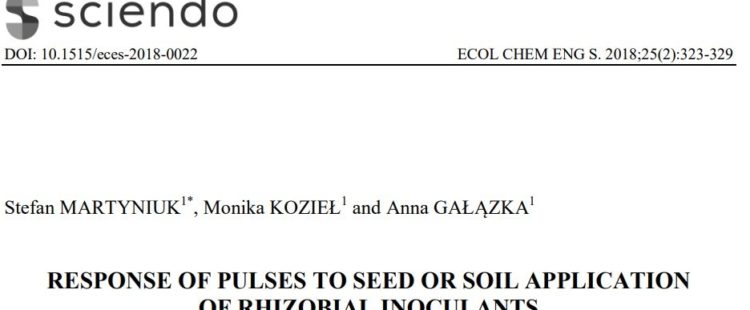
Response of pulses to seed or soil application of rhizobial inoculants, Martyniuk S., Kozieł M., Gałązka A., Ecological Chemistry and Engineering S, 2018; 25(2): 323-329.
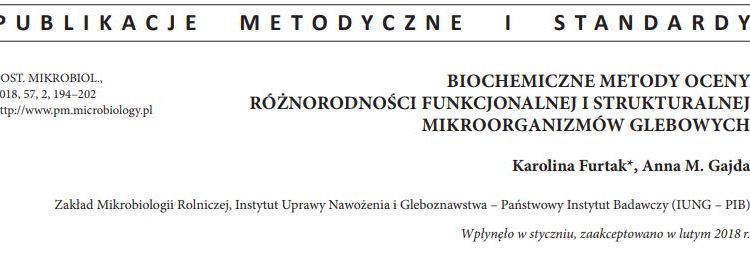
Biochemiczne metody oceny różnorodności funkcjonalnej i strukturalnej mikroorganizmów glebowych, Furtak K., Gajda A.M., Postępy Mikrobiologii; 2018, 57, 2, s.194-202.
Link do publikacji: ![]()
Streszczenie:
Mikrobiom glebowy składa się z wysoce zróżnicowanych pod względem strukturalnym oraz funkcjonalnym grup mikroorganizmów. Stanowi on obiekt licznych badań od wielu lat, jednakże wciąż pozostaje nie do końca poznany. Wiadome jest, że mikroorganizmy glebowe odgrywają główną rolę w procesach biogeochemicznych. Znajomość ich różnorodności strukturalnej i funkcjonalnej pozwala zatem na ocenę stanu środowiska glebowego, co jest niezwykle istotne dla agronomii oraz ekologii. Działalność rolnicza oraz premysłowa człowieka powoduje zmiany w aktywności gleby, które należy monitorować. W badaniach nad aktywnością i różnorodnością mikrobiologiczną gleby można wyróżnić wiele metod badawczych opracowywanych i udoskonalanych przez naukowców z całego świata. Metody biochemiczne stosowane w celu analizy aktywności mikrobiologicznej polegają na określeniu zdolności mikroorganizmów do syntezy, asymilacji bądź rozkładu określonych związków chemicznych, a także na analizie komponentów komórek drobnoustrojów. Omówiono w niniejszej pracy metody badawcze, które umożliwiają analizę zarówno funkcjonalności mikroorganizmów, jak i ich strukturalnego zróżnicowania.
Abstract:
Soil microbiome is composed of groups of microorganisms which are structurally and functionally very different. For many years soil microbiome has been the subject of numerous studies, but still is not fully recognized. It is well known that soil microorganisms play a key role in biogeochemical processes. Knowledge of their structural and functional diversity makes it possible to assess the condition of the soil environment, which is extremely important for agronomy and ecology. The agricultural and industrial activities of humans cause changes in soil activity, which should be monitored. There are many different research methods developed to analyze soil activity and microbiological soil diversity and refined by researchers from around the world in. Biochemical methods used to analyze microbial activity are based on the determination of the ability of microorganisms to synthesize, assimilate or decompose specific chemical compounds, as well as on the analysis of microbial cell components. This study presents the research methods used for the analysis of both: the functionality of microorganisms and their structural diversity
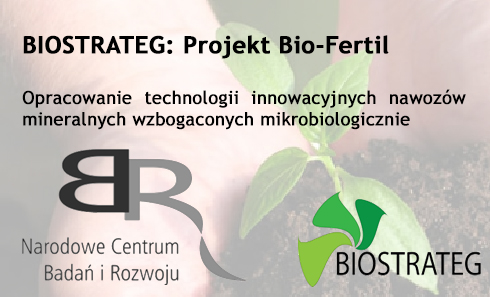

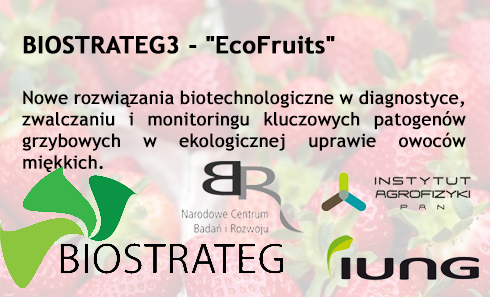

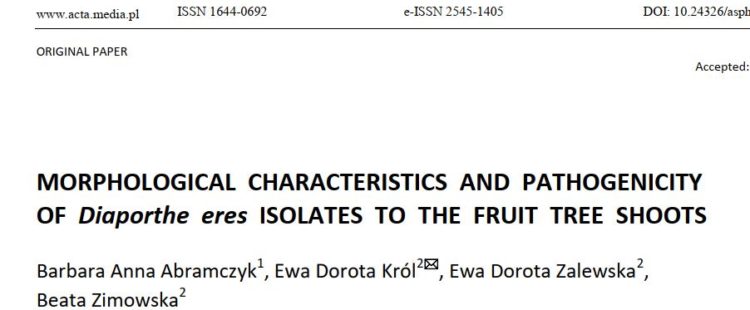
Abramczyk B.A., Król E.D., Zalewska E.D., Zimowska B., Morphological characteristics and pathogenicity of Diaporthe eres isolates to the fruit tree shoots, Acta Sci. Pol. Hortorum Cultus, 2018, 125-133, DOI: 10.24326/asphc.2018.6.13.
Abstrakt:
This work is a continuation of research on Diaporthe genus isolates obtained in 2010-2012 from fruit trees
in Poland, which on the basis of previously conducted molecular tests, have been identified as one species
belonging to the Diaporthe eres species complex. The aim of this study was to determine the morphology
and pathogenic abilities of tested Diaporthe eres isolates. The experiment included cross tests, in which the
shoots of apple, pear, cherry and plum trees were inoculated with each of the 4 isolates derived from each
mentioned host plants. As a result of experiment, the pathogenic nature of D. eres in relation to the shoots
of fruit trees, was confirmed. The isolates were also characterized on the basis of the colony appearance and
spore dimensions. Morphological features of studied D. eres cultures were very similar, regardless of the
isolate and the host plant, from which they were obtained. All tested isolates formed alpha and beta conidia
having the same range size.
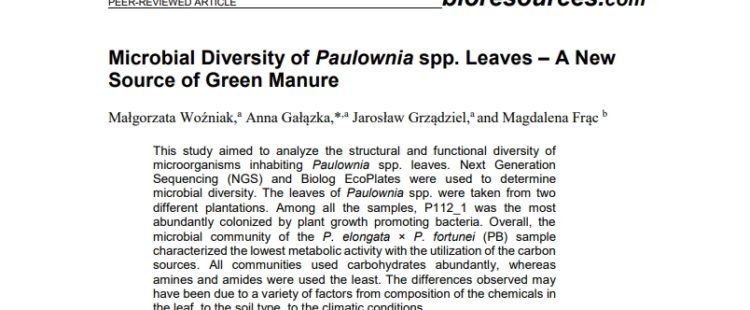
Microbial Diversity of Paulownia spp. Leaves – A New Source of Green Manure, Woźniak M., Gałązka A., Grządziel J., Frąc M.; BioResources, 2018
Abstract
Kontynuując korzystanie z witryny, wyrażasz zgodę na używanie plików cookie. więcej informacji
The cookie settings on this website are set to "allow cookies" to give you the best browsing experience possible. If you continue to use this website without changing your cookie settings or you click "Accept" below then you are consenting to this.